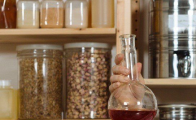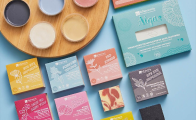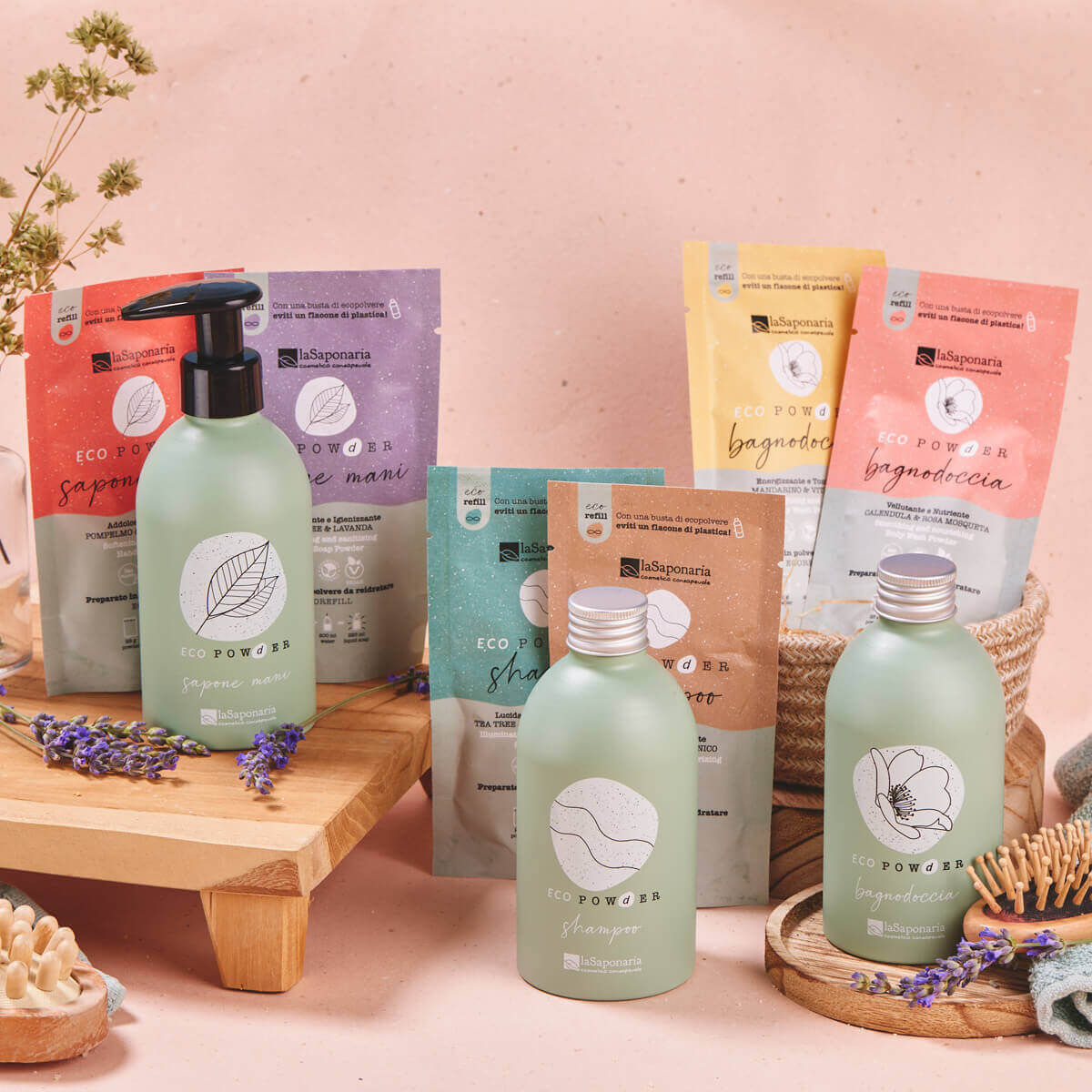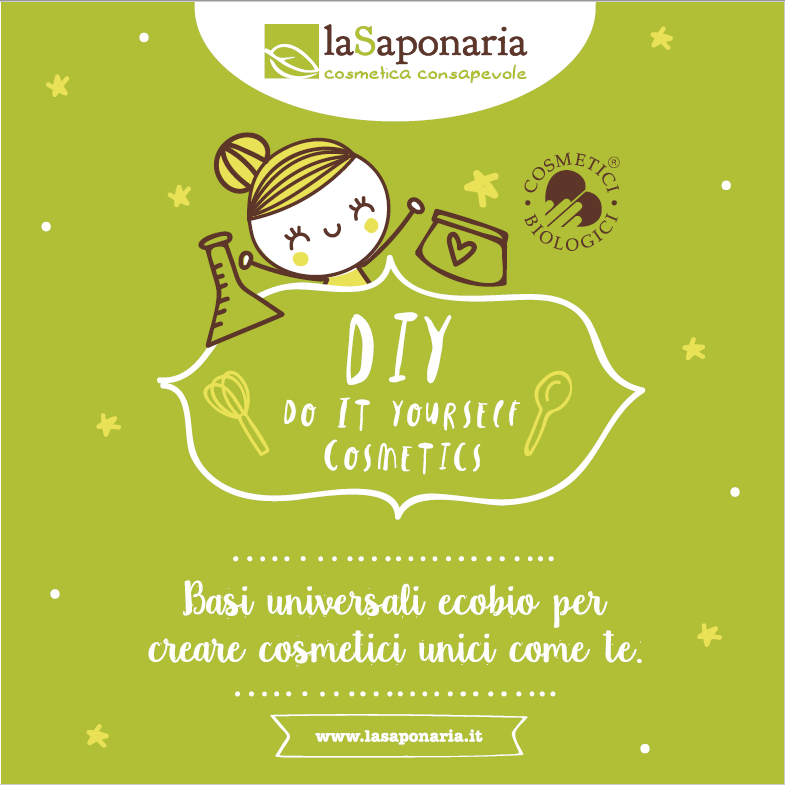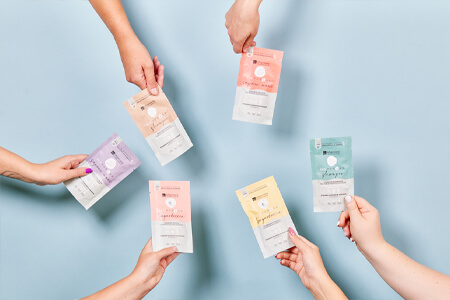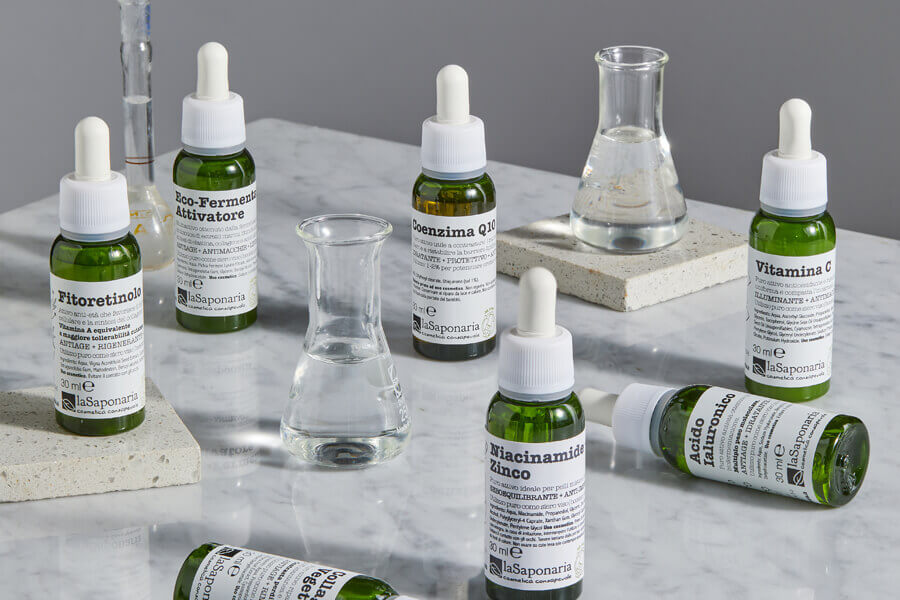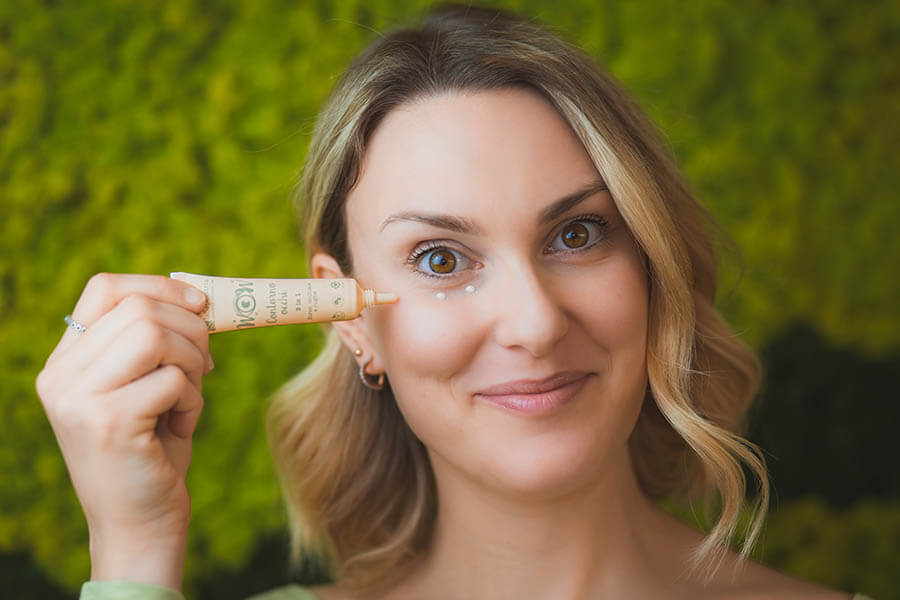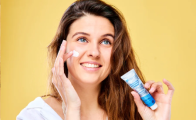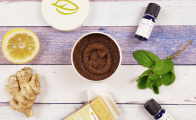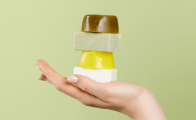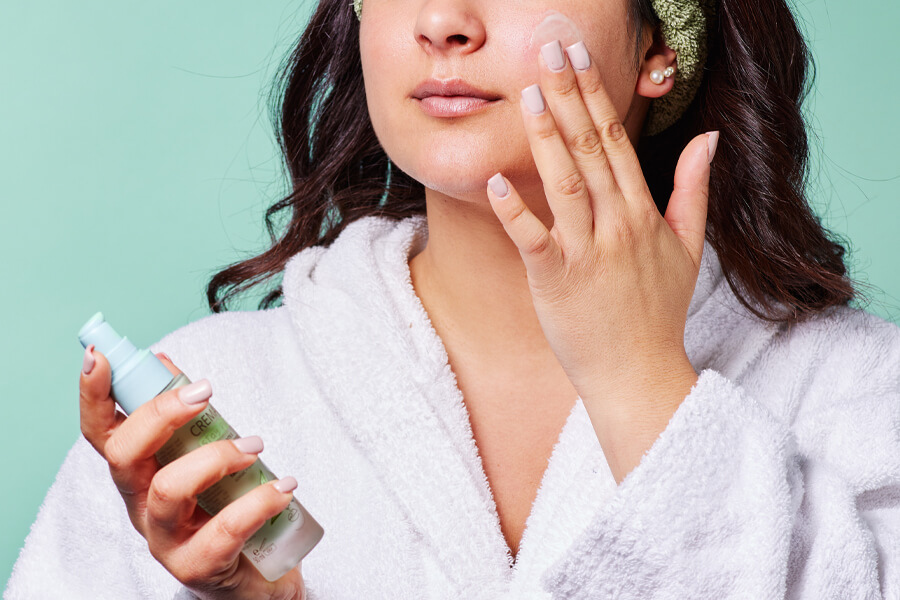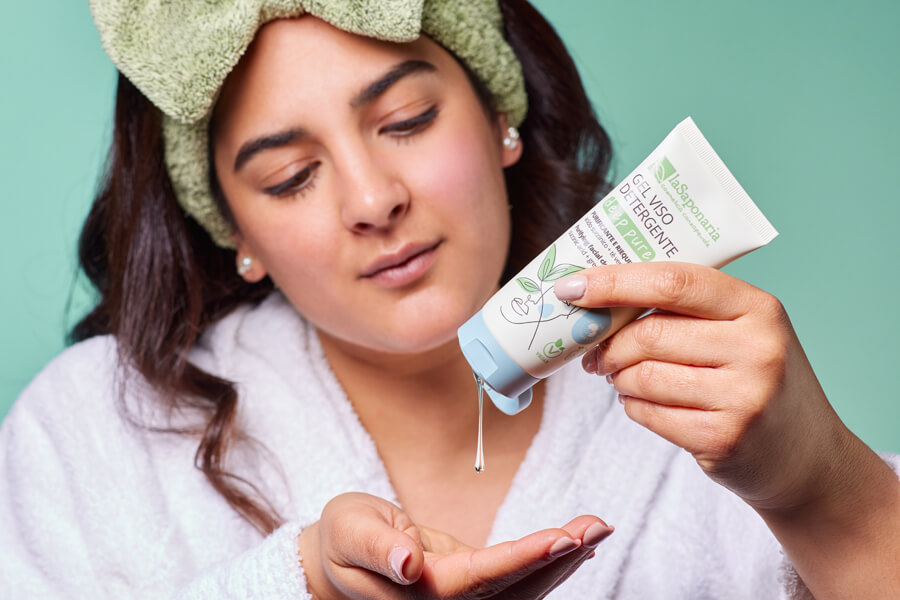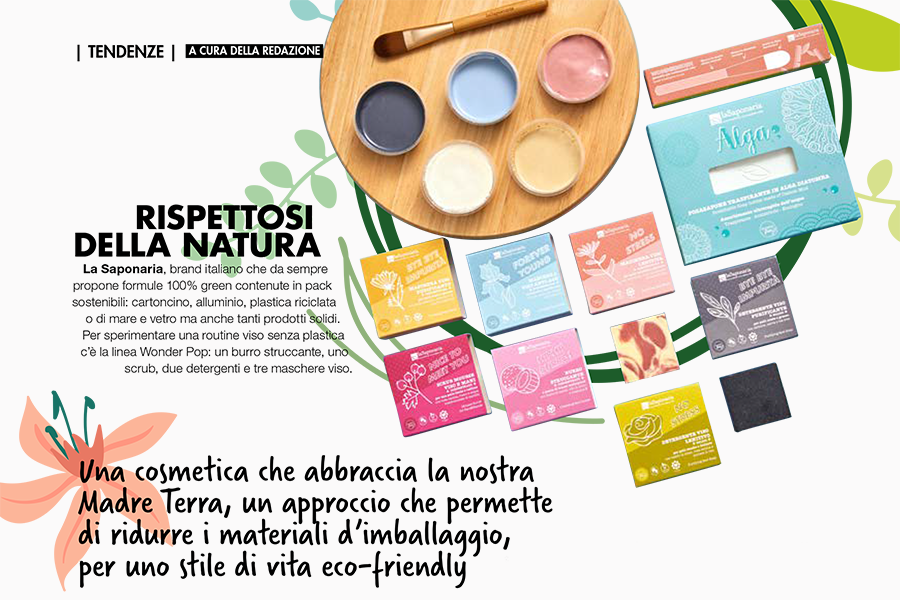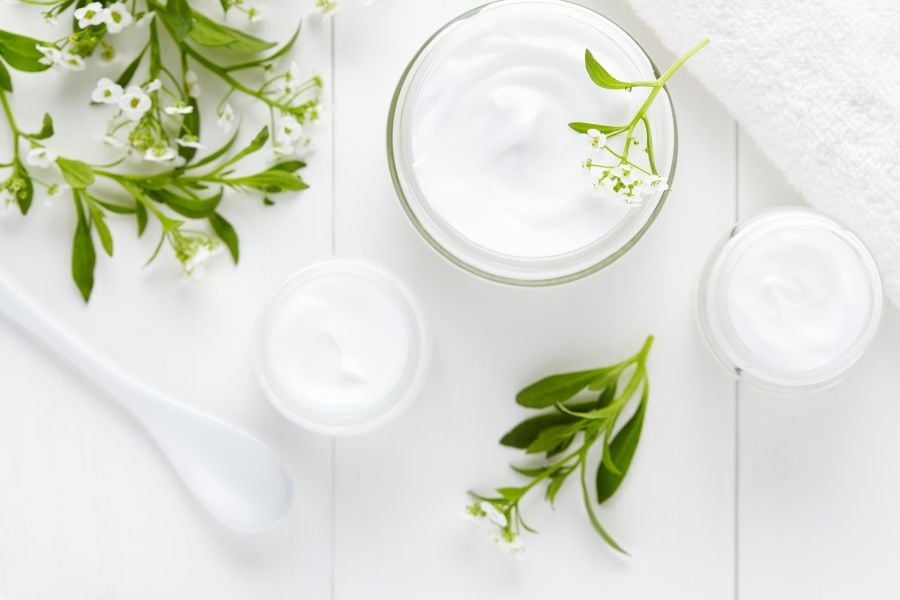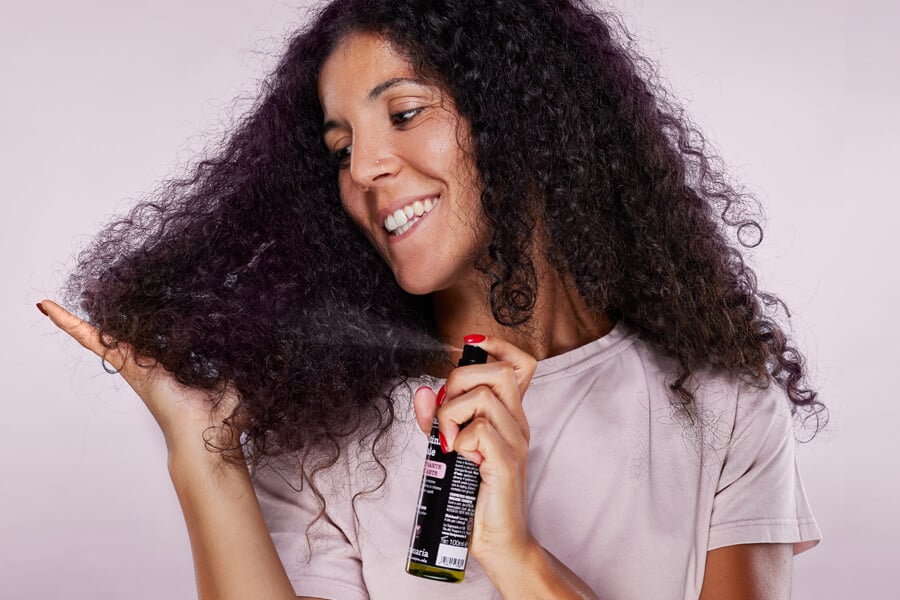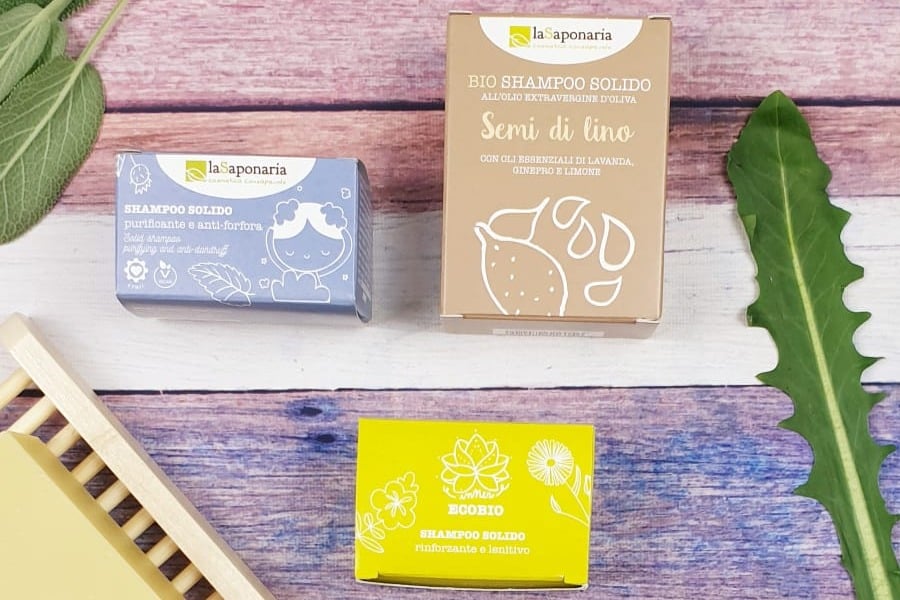The insights of La Saponaria
Natural face care: everything you need to know for organic skin care
Natural cosmetics are the safest and most effective ally for face care. Capable of preventing the signs of aging and combating various skin problems, it will accompany your daily beauty routine, giving you a radiant face like never before.
The art of self-production, with 100% natural ingredients, the use of organic solid cosmetics or essential oils, are practices that will improve your skin care with the guarantee of using organic and safe products.
In this content we will deal in detail with the topic of facial care, in particular:
- Face beauty routine: the rules to follow to take care of the skin
- Organic cosmetics: the benefits for skin and health
- Cosmetics for face care: here's where to start
How to recognize your skin type?
Recognizing your skin type is not so obvious and taking the time to understand its physiology is essential to improve the beauty and health of the face. All skin types have well-defined characteristics, and require special cosmetics capable of enhancing their strengths.
Below we will discover the peculiarities of each type of dermis, so you will easily be able to understand which category of skin you belong to.
Normal skin
Normal skin appears to be the healthiest from a physiological point of view, balanced in color and muscle composition, and has no evident defects.
- Appearance: It has a light and bright colour
- To the touch: Compact and smooth
- Physiology: Optimal microcirculation, balanced sebum production and balanced hydration levels are highlighted, resulting in tonic and elastic
- Particular signs: A rather rare skin in adults, but common among young people, its characteristic is that it does not present evident imperfections.
Oily skin
Oily skin by definition is impure skin due to the high production of sebum by the subcutaneous sebaceous glands. More common than you think, it is influenced by factors related to nutrition and hormonal fluctuations.
- Appearance: Appears dull and shiny
- To the touch: Oily and irregular
- Physiology: Skin type quite common at all ages, a peculiarity that distinguishes it is associated with the excessive production of sebum which forms a thick and waxy hydrolipidic film, unable to let the skin breathe.
- Particular signs: Evident dilated pores and accumulations of subcutaneous sebum, the most common causes of oily skin are associated with genetics, hormonal imbalances and skin stress induced by external agents.

Combination skin
A skin is defined as mixed when it is not uniform but presents an alternation of fat areas alternating with dry areas and it is a constitutional condition, or rather determined by genetic factors.
- Appearance: The T-zone is oily with dry skin in the remaining areas of the face.
- To the touch: Alternate almost dry arid parts with greasy areas, classic of oily skin.
- Physiology: Particularly common, combination skin is a combination of genetic factors, inadequate facial care and an abuse of detergents capable of overstimulating the production of fat by the sebaceous glands.
- Distinguishing marks: As the name suggests, the skin is uneven and difficult to treat. If you find the characteristics of combination skin on your face, pay particular attention to the purchase of products specifically designed to deal with the unexpected that may arise with the change of season or with stressful situations.
![]()
Acne prone skin
In people with excessive sebum production and a strong thickening of the epidermis, an ideal environment can develop for the bacterial proliferation characteristic of acneic skin.
- Appearance: It is a skin with a grayish color at times reddish or hyperpigmented due to inflammation.
- To the touch: Irregular, with dilated pores and oily in some areas.
- Physiology: Acne-prone skin is in a particular condition, such that the sebaceous glands produce an excessive amount of sebum which is deposited in the hair follicle, creating the blackhead.
- Distinguishing signs: Presence of blackheads and whiteheads, papules and pustules which, if left untreated, can give rise to scars.
Sensitive skin
In the absence of pathologies or allergies, sensitive skin is defined as a particular type of skin, which tends to react to external chemical and physical stimuli, through rashes and skin rashes.
- Appearance: Red and irritated, uniformly or on the basis of specific areas of the face which are more delicate.
- To the touch: Dry and not very elastic with a marked tendency to peel.
- Physiology: It can be associated with dermatological diseases or hypersensitivity to external chemical or physical agents, capable of inducing more or less serious allergies and dermatitis.
- Particular signs: It produces a marked sensation of itching and burning. It is also subject to the formation of small wrinkles and unsightly blemishes due to photoaging
![]()
Dry skin
Dry skin occurs when the epidermis, i.e. the outermost layer, is dehydrated and cracked, due to a lack of water or lipids.
This type of skin needs continuous hydration, both externally through creams or masks, and internally through a good daily consumption of water.
- Appearance: With a dull complexion, not at all bright, it immediately appears dehydrated and not very elastic.
- To the touch: Rough and irregular, it has a high flaking, resulting fragile and thin.
- Physiology: Associated with an inadequate degree of hydration, the process of evaporation of skin water is considerably faster and this encourages the aging process.
- Particular signs: Not all dry skins are identified as dehydrated, some are alipidic, or due to an insufficient production of lipids capable of hydrating the deep layers of the dermis.
Mature skin
The skin is defined as mature when the aging process begins, i.e. starting from the age of 25, it can be defined as already mature (obviously at various stages). In fact, it will gradually be subject to a gradual loss of volume and a slowdown in cell turnover.
- Appearance: Pale and yellowish due to reduced blood circulation and lacking in elasticity.
- To the touch: Sometimes dry and marked by various types of more or less deep wrinkles.
- Physiology: Characterized by the slowdown of lymphatic circulation and cell regeneration, it is limited in metabolic exchanges and in the drainage of catabolites which negatively affect the process of tissue senescence.
- Particular signs: Type of skin that characterizes a specific age group, i.e. starting from 25 years. However, with adequate skin care it is possible to delay the inexorable skin aging, intervening early on the appearance of wrinkles and hyperpigmentation spots, giving the face a good elastic tone.

Each skin type prefers its specific cosmetic and in some cases adopting products that are not in line with one's dermis could cause significant damage.
Identifying your skin is not that simple, sometimes there may be special cases, such as, for example, an overlap of two categories in combination skin.
If you want to better understand your skin type, you can take our test here.
Facial care: all the benefits of a daily routine
In everyday life it is essential to take care of the skin of the face, adopting a real daily routine.
Because you may ask yourself: is it so important to carve out a moment in the day to dedicate exclusively to facial skin care?
Below we will discover together all the benefits that skin care brings with it.
Prevent the signs of aging with facial care
Skin aging is a multifactorial physiological process and one of the main causes is precisely the lack of facial skin care. We can't decide not to age, but we can help skin stay younger, longer!
- It is advisable to keep the skin nourished and hydrated as much as possible, choosing cosmetics in line with your type of dermis.
- Do massages and "targeted" exercises, so as to prevent sagging of the skin such as the unsightly underchin.
- Give up bad habits such as a sedentary lifestyle or smoking and consider embarking on a diet based more on plants, which can bring numerous nutrients to the skin.
- In addition to understanding what type of skin you have, when buying cosmetics for face care, capable of counteracting aging, also evaluate the age group in which you are. A skin over 50 will have different needs compared to one of 35.
These are general indications, but as mentioned, each of us has specific needs determined by particular factors such as genetics, the environment and lifestyle: each case must be evaluated in person, so as to undertake an ad hoc path with tangible results.

Shielding sun damage through skin care
To date we know well the damage the sun can cause to the skin of the face!
Choose the best anti-spot and anti-wrinkle sunscreen for your face designed on the basis of your phototype, even the daily routine plays an essential role, but how?
There are day creams that can guarantee you an excellent degree of hydration and at the same time shield you from UV rays for the whole day, without you realizing it.
Facial care becomes essential every day, because even during a short walk outdoors, ultraviolet rays can reach our skin, and neutralizing their effects is essential.
Facial care protects the skin from pollutants
Pollutants, so many and so small, today accompany us for entire days.
The goal of facial care is also to protect the skin as much as possible from toxic elements that could, over time, cause skin problems on our face.
To deal with these tiny particles we can on our part:
- Purify the skin
- Use shielding products
- Make abundant use of antioxidant cosmetic products, such as Vitamin C
Take action right away and evaluate if there are signs of pollution on your face: analyzing the complexion, quantifying the sebaceous production and the presence of sensitization alterations.
A few simple gestures which, if carried out consistently, will give you a new glow, healthy skin, thus delaying the effects of time. Below we will go to see in detail what these essential steps entail, to be carried out in the morning and in the evening.

Face beauty routine: the rules to follow to take care of the skin
For an effective beauty routine, the rules are few and simple, what really matters is choosing the right product in relation to your skin type, so as to make skincare personalized according to your needs.
Below we will highlight the essential basic steps, to undertake an effective path in facial skin care.
We won't go into detail with the different skin categories, as we will show you the standard process for a complete skin care.
The basic steps of the beauty routine: which products to use
A complete skin care can be created by following several steps. The inspiration in this case comes from the now very famous Korean skin care, which involves layering, or the stratification of multiple products on the face. We start from the most watery textures to arrive, layer by layer, at the more full-bodied products. Korean skin care involves 10 steps, we offer it adapted and simplified.
But is it always necessary to follow all the steps? Not always, for example masks can be done 1 or 2 times a week, as well as facial exfoliation using a scrub which can be done once a week.
And why do we always have to follow different steps in our beauty routine?
If you are looking for a truly functional face routine that is perfectly adapted to your needs, we cannot expect to find all the answers in just one product. It is the union of several products with each other that can best adapt to our specific needs.
Cosmetics alone are certainly already very effective, but when combined they see their functionality increase.
But let's go in order and see how to structure a complete beauty routine, step by step:
The steps must be done morning and evening, with exceptions for some products, the beauty routine must be repeated both in the morning when you get up and in the evening before going to sleep.

Step 1 - Facial cleansing
Cleanliness is the first rule to treat your skin well!
It must be performed both in the morning and in the evening: in the morning the layer of dead cells, deposited during the night, will have to be eliminated.
Before going to sleep however, we must work hard to eliminate all traces of make-up and polluting particles accumulated during the day.
- In the morning: a rinse with a face soap and cold water is enough. In this case we pay attention to the quality of the soap: it is better to opt for organic soaps created with excellent quality raw materials and specially formulated for the face or even specific cleansing mousses for cleansing.
- In the evening: We start with a cleansing milk or make-up remover butter that we will massage all over the face and then remove with a damp cloth. Going through rinsing with the morning cleanser and finally dabbing the face gently with a soft, clean towel.
The recommended cleansing for the evening involves the adoption of double cleansing, considered one of the most delicate, but at the same time functional methods, to eliminate heavy make-up and skin impurities. Recommended for all skin types, especially sensitive ones.
Step 2 - Facial skin scrubs and exfoliators
Exfoliation can be chemical (with acids), enzymatic or mechanical (with scrubs) and is a perfect ally for the removal of dead cells. The skin is a real organ, made up of layers superimposed on each other, capable of determining continuous cell renewal.
With exfoliation you can facilitate the natural regeneration process, helping the skin to eliminate the residual particles of keratinocytes at the end of its life. The risk of exfoliating too often lies in inducing follicular overstimulation, with the production of sebum or in removing an excessive amount of lipids and water, leading to a dry skin condition. So exfoliate yes, but not too much.
Chemical peeling is a facial treatment that allows deep exfoliation of the skin, promoting a more compact, luminous and smoother skin. This type of treatment includes the AHA Peeling, a monthly deep cleansing and regeneration treatment with high skin tolerability: it is applied once a day for 6 days, left on for 10 minutes and rinsed off. After 6 days of use, the skin is renewed by 83%: to find out more, you can read the in-depth analysis here.
Exfoliation can also take place through scrubs, just exercise small rotations with the fingertips, applying a slight pressure, so as to work the microgranules contained within the product. We recommend scrubbing once a week instead of morning cleansing. If you have peeled, wait 1 week-10 days before applying the scrub again.
A delicate scrub with small grains is always good for the face, just like our Wonder scrub and Nice to Meet You face scrubs.
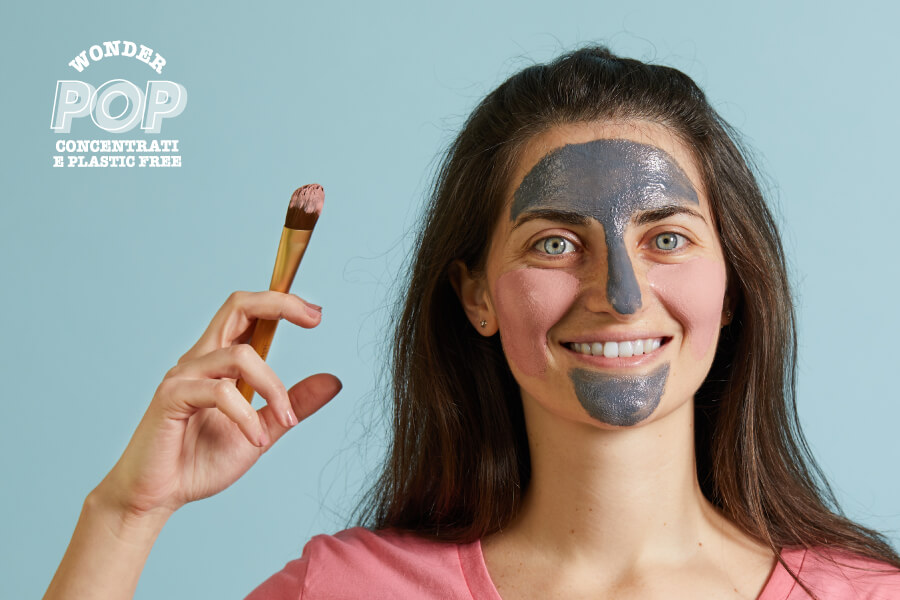
Step 3 - Face masks
It is a real beauty pampering which, if inserted correctly within the beauty routine, will make the difference: in fact, with a single application of a fabric face mask, the skin can absorb the quantity of active ingredients in one go. which would normally absorb in a week.
We must point out that there are many types of masks on the market such as: purifying, moisturizing, anti-aging, exfoliating which are in turn divided on the basis of skin type.
The masks are a true concentrate of active ingredients and enhance daily skincare.
In general, one or two applications a week are recommended, taking care not to exceed the shutter speed: take some time to relax, the beauty of face masks is that they can be applied at any time of the day but always after the moment. of cleansing.
Step 4 - Facial toner
Used after cleansing the face, the tonic helps eliminate the last residues of impurities, helping to purify the dilated pores of the skin.
Its refreshing and decongestant action will be useful for the most sensitive skins and will keep the degree of hydration of the face unchanged so that the skin remains soft and compact. It's also important because it prepares the skin to receive the next steps of the beauty routine.
Tonics are divided into hydroalcoholic or water-based solutions:
- Alcohol-based tonics: Formulations that are more widespread and easily available in large-scale distribution, could cause problems for those suffering from acne, causing burning and redness in areas subject to inflammation.
- Water-based tonics: Obtained mainly from the distillation of plants and flowers, such as roses, they are totally natural on the skin, leaving you with a feeling of freshness never experienced before.
The only warning concerns the application: be careful to avoid the eye contour area, spray the product directly on the face and dab with your fingers.
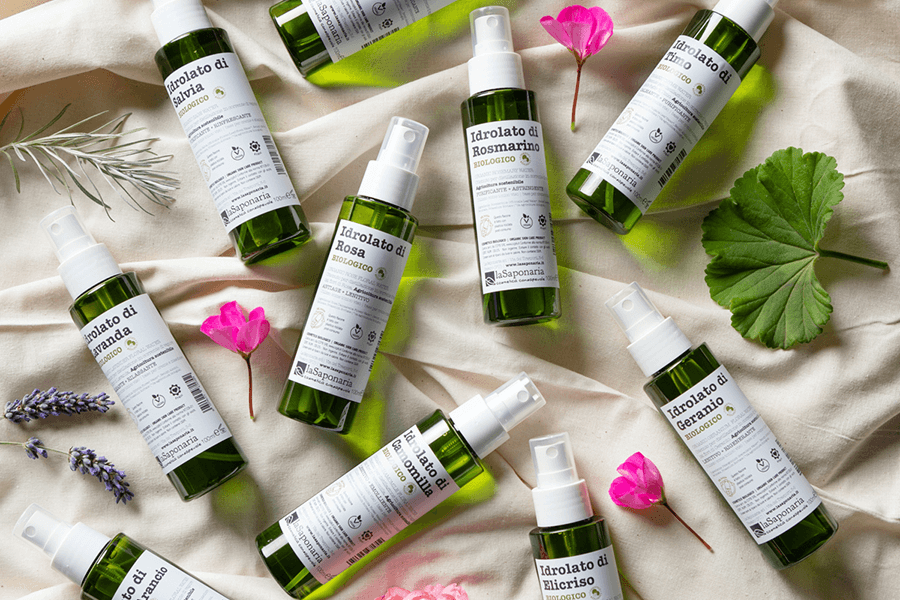
Step 5 - Facial skin serum
The serum has the specific function of deeply conveying the creams or treatments that will follow.
Normally a face cream should then be added to the serum, since used alone it is not enough to hydrate, but only brings its specific function to the skin.
It can have different consistencies, obviously to be chosen according to the type and age of the skin: liquid, gel or oily and should be absorbed immediately by the dermis without leaving a trace on the epidermis.
The serum should also be used on the neck and décolleté, equally delicate parts that need nourishment equivalent to the skin of the face.
Over the years, face serums have become more and more specific so that everyone can use what is best suited to their skin type. This is why it is good to choose simple formulas with a light texture, perfect for being combined with each other to obtain multiple functions, as in the case of Pure Actives, face serums with an impalpable texture. To find out more about them you can read our in-depth analysis here.
Step 6 - Face care cream
A good face cream is essential for daily skin care, especially if based on organic extracts (preferably vegetable) and free from chemical agents, such as parabens.
Each skin has its own face cream, the choice shouldn't be made by chance.
Immediately adopting a product in line with your skin needs allows you to achieve tangible results! If you are unsure about the type of cream to buy, you could:
- Ask for a specific consultation to frame your skin needs.
- If you have a rough idea of your skin type, start testing different products to find out which one works best for your skin type.
A valid alternative to the night cream, for dry and sensitive skins is certainly the face oil able to protect against oxidation and free radicals.
During the night it repairs skin damage, and strengthens the skin, forming a hydrolipidic film capable of retaining water. A true ally for dry skin prone to flaking.
Step 7 - Eye contour
This area of the face is the most fragile and delicate, due to the lack of sebaceous glands and the presence of a thin layer of skin. Therefore it is necessary to take care of the eye contour immediately, using specific creams.
The most common blemishes affecting the eye area are: dark circles, bags and wrinkles.
To make eye contour cosmetics performant, pay attention to how you apply them! Apply a small amount of product and start tapping with the tip of your ring finger, then apply light pressure on the inner hollow of the eye and smooth outwards.
In order to be effective, the beauty routine must be in line with the needs of your face, consequently you must use products that are as natural as possible constantly. It will be your commitment and perseverance that will give you the results you were looking for.
Organic cosmetics: the benefits for skin and health
At the basis of organic cosmetics is the search for environmentally friendly, healthy and safe raw materials for your skin and for your health.
A cosmetic can be defined as organic if first of all it is certified by a body in charge. In addition, a prerogative that distinguishes the products of La Saponaria is the use of active ingredients derived from an ethical, local and fair trade supply chain. Our ingredients are 100% vegan, respect the natural harvesting cycles and do not compromise the surrounding ecosystem.
Furthermore, knowing the strengths of organic cosmetics makes you more aware of a new concept of skin care, broader and more consistent with the world of ecology and health.
Below we will deal with the theme of organic cosmetics, focusing on the characteristics and benefits of this type of product.
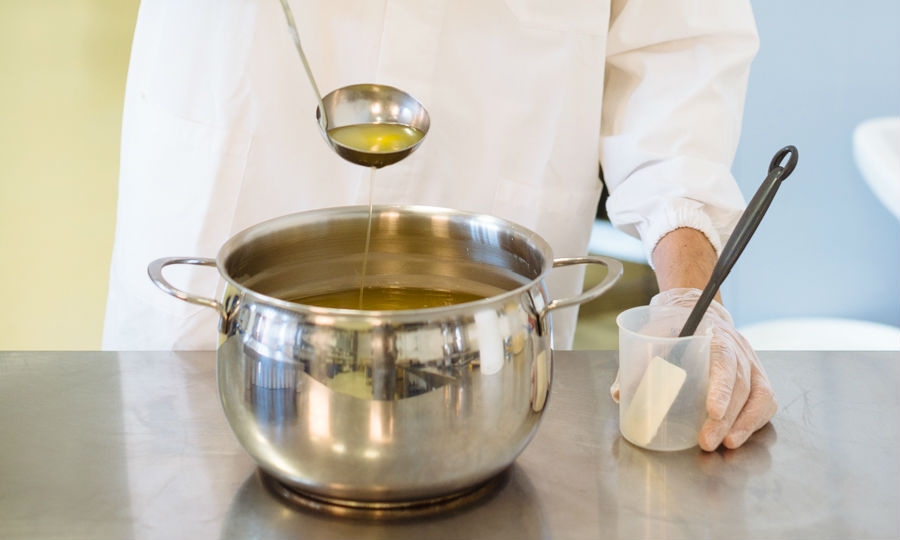
Organic cosmetics for the face: perfect skin in complete safety
The objective of organic cosmetics, in addition to using natural active ingredients, is to guarantee the maximum safety of products for the skin of the face.
Through laboratory analyses, the chemical-physical and microbiological properties of the elements that make up the final product are investigated.
At the end of this process, an evaluation of the cosmetic formulation of the element in question is drawn up, reported in the PIF (Product information file) to which data on manufacturing and possible side effects, for example associated with any allergies, will be added.
So the guarantee of a natural product lies in creating safe and effective formulations while minimizing the impact on the planet.
Self-production of cosmetics for face care
Self-production, in addition to gratifying from a manual point of view, is good for the skin and the planet. Combining different natural ingredients, exploring their effects and benefits on the skin and creating customized organic cosmetics can be a real hobby, as well as a healthy and safe practice for your skin.
Self-production involves a lower environmental impact, thanks to the use of raw materials from a controlled ethical supply chain, the reuse of packaging and the value that is given to the work of those who produce the active ingredients that will be part of self-produced cosmetic products.
It is a made-to-measure and aware cosmetic, because it is in line with specific needs, and is capable of making people perceive the value of natural active ingredients compared to the chemical additives contained in most face cosmetics.
The practice of self-production lies in ancient traditions, when the right importance was given to each raw material, enhancing the active ingredients that were obtained through processes such as saponification for example.
Today it is possible to rediscover this ancient art, full of popular knowledge and botanical and chemical knowledge, thanks to recipe books and advice for creating the entire range of cosmetics for face care directly at home.
Organic solid cosmetics for the face: why choose them?
More and more often we hear about solid cosmetics, the best choice if you are approaching a sustainable ideal, with a low impact on the environment.
This type of cosmetics is available in every variety of facial skin care products: make-up remover soaps, face masks, exfoliating scrubs, which cannot be done without in daily skincare.
The added value of solid cosmetics lies in the respect for the environment thanks to the paper packaging and the fact that they are zero waste.
Like all paraben and petrolatum-free cosmetics, solid products prevent the formation of that water-repellent patina, which makes the skin unable to breathe. Solid cosmetics for face care are made through two different processes:
- Saponification: Or obtained like a normal soap, but with a more basic pH than normal cosmetics.
- Compaction: Where the natural ingredients are dehydrated and recompacted, in this way the Ph remains unchanged as in the corresponding liquid cosmetics.
At the time of use, just wet your hands and rub the product, as if it were a simple bar of soap, a creamy foam will form which you can spread on the skin of the face as if it were any cosmetic cream, liquid or foam.
Cosmetics for face care: here's where to start
Starting from a good knowledge of your skin is certainly a good start.
If the skin type is not yet clear, it is necessary to deepen the topic and rely on a consultancy during which it is possible to understand a lot about the dermis and the characteristics associated with it.
Subsequently, set up a personalized beauty routine, so that you can carry out daily facial care: enhancing the strengths of the complexion, keeping the skin layers in excellent health, and eliminating potentially harmful particles for the skin day after day.
Finally, consider gradually inserting self-produced cosmetic products, the advantages on the skin are innumerable starting from the high degree of delicacy on the most sensitive skins and the personalization of the Ph.
A good face routine, carried out both in the morning and in the evening, does not involve a great waste of time, it is simply a matter of inserting it into your daily habits, after all it is a relaxing moment.
Over time the benefits will not be long in coming and they will be many!
If you are not sure about your skin type, take the test!

Written by Simona
She is La Saponaria’s digital writer: always juggling a newsletter to send and a blog article to publish, she lovingly takes care of our social media channels and our e-commerce.



